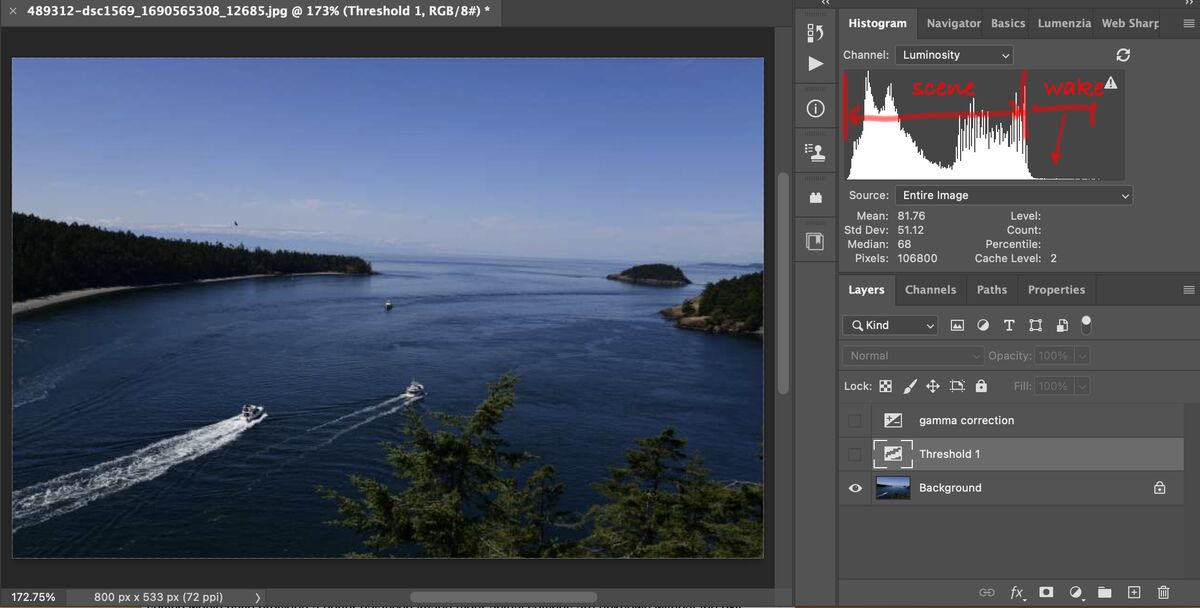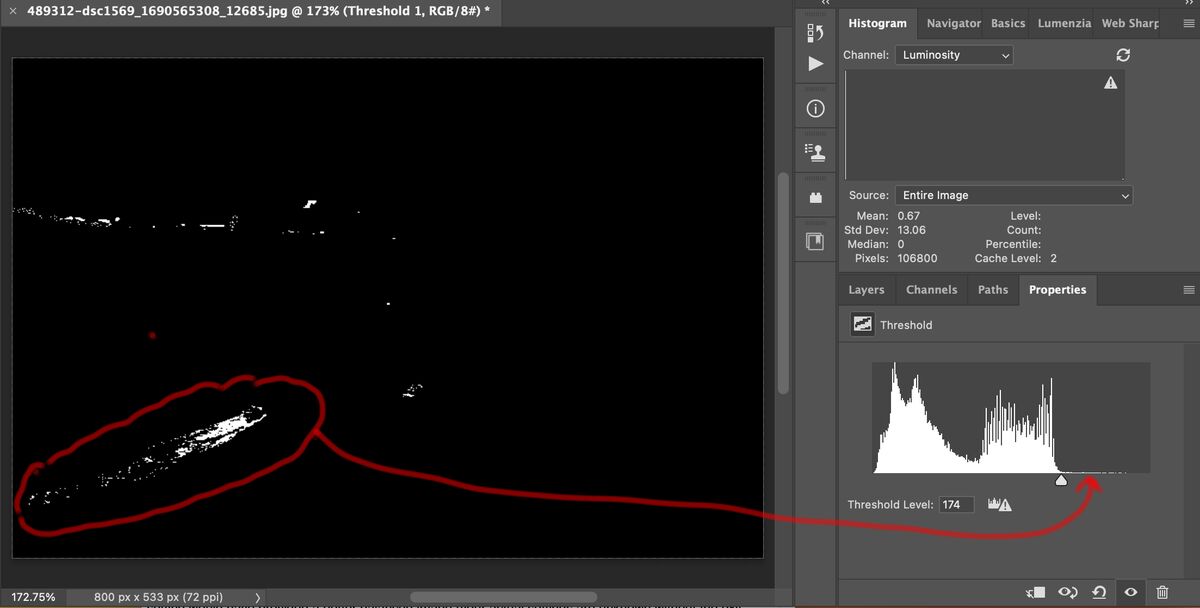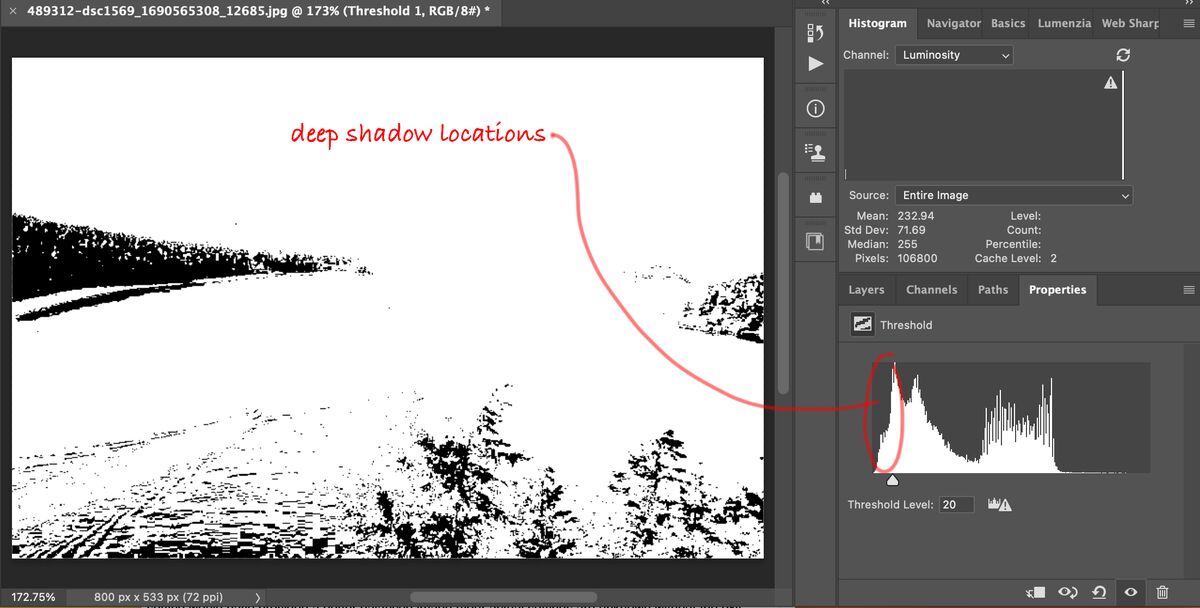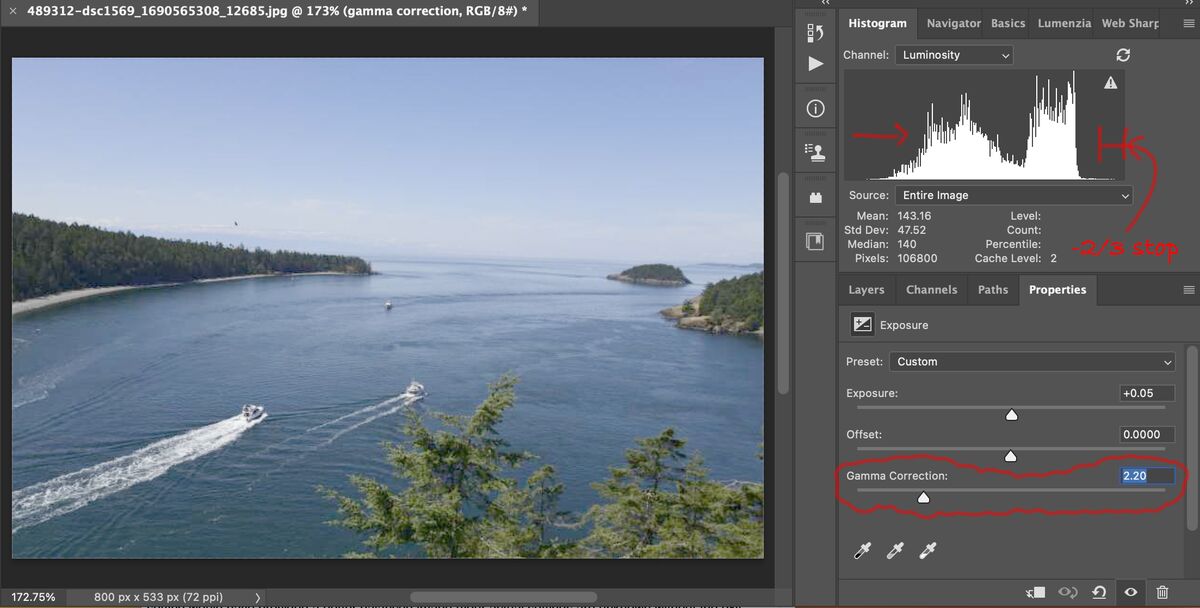D850 Underexposure
Jul 31, 2023 05:55:15 #
bobforman
Loc: Anacortes, Washington State
Thanks to all the contributors here. Your advice is well-taken and I will experiment with compensation and bracketing. You're all a great resource for those of us who struggle with these issues from time to time. The post processing made the photo a lot more complete with the shadows highlighted and the sea somewhat lighter, did that with Elements.
Bob
Bob
Jul 31, 2023 07:09:35 #
This also looks like an image my D750 might make if I have it set on "Standard", rather than "Neutral" for jpeg saturation/contrast settings. I'd have gone to "Neutral" and added a stop in exposure compensation; possibly even tried "HDR".
Jul 31, 2023 14:09:00 #
bobforman wrote:
Out in the bright sunlight yesterday, I was photographing a water scene with my D850, only to discover the photos were under-exposed. I figure I've done wrong...
I’m assuming that this is a SOOC image from your camera. It would have been very helpful troubleshooting this image had you posted the original included with the exif data. Without the additional exif data, you’ll just get generalized opinions and speculation about the problem.
bobforman wrote:
...The camera was set to "P", Active D off and matrix metering mode...
There was nothing wrong with your stated camera settings of P/active-D=off/matrix metering mode.
bobforman wrote:
...Any thoughts?
You do have, primarily, a gamma error problem with about a 2/3 stop underexposure. This is illustrated in the image histogram (1). Your camera did record the full dynamic range of the scene without clipping the highlights (2) or shadows (3), so no loss of information. However, the shadows are blocked up at the extreme low end.
The gamma problem can be caused by an increased contrast setting and/or an incorrect picture control setting for this specific scene. Selecting Neutral rather than Landscape in your picture control setting would have provided a better balanced image (your actual settings are unknown without the exif data). Also because this is a high contrast scene, reducing contrast in your picture control settings would have resulted in better shadow detail.
When shooting SOOC and letting the camera process the jpg without PP, the picture control settings are very important and needs to constantly change for the scene type. In this case, it appears to be incorrectly set for this particular scene.
However a simple negative gamma correction in PS brightens the scene and recovering shadow details without clipping your highlights (4). By increasing exposure about 2/3 stop, the boat’s wake will approach clipping where it should be.
There is a nice article in the ‘Cambridge in Color’ website about gamma correction. The associated links further explains how gamma correction impacts exposure.
https://www.cambridgeincolour.com/tutorials/gamma-correction.htm
Good luck with your troubleshooting. There is a lot of information from many contributors to digest. You may already know this, but letting the camera do your post-processing (i.e. jpg processing), using one setting never works well. You will always be changing the post-processing settings in-camera to match the scene type before ever pressing the shutter release button.
1 - original image. Note the histogram is shifted left. No clipping shadows or highlights.

2 - boat wake should be near clipping but is still low.

3 - location of deep shadows, but no clipping.

4 - only made negative gamma correction, no other adjustments.

Jul 31, 2023 15:29:09 #
bobforman wrote:
Out in the bright sunlight yesterday, I was photographing a water scene with my D850, only to discover the photos were under-exposed. I figure I've done wrong. The camera was set to "P", Active D off and matrix metering mode. Any thoughts?
That looks about right to me for a RAW file. It's apparent your D850 exposed for the sky, which left the trees dark. But on a D850, you should be able to pull up the shadows in post quite nicely.
I say it looks about right because much brighter and you'd blow out the highlights in the boat's wake. With most Sony and Nikon sensors, you can recover quite a lot of shadow detail without introducing much noise, but blown highlights are irrecoverable.
Jul 31, 2023 15:50:03 #
SalvageDiver wrote:
You do have, primarily, a gamma error problem with... (show quote)
#4 looks washed out to me. You lose the rich blues of the sky and water. I don't think it needed to be lightened that much.
Jul 31, 2023 16:38:13 #
Jul 31, 2023 17:16:36 #
larryepage
Loc: North Texas area
I have learned that one secret to using Picture Controls is to be willing to go inside each one and make adjustments as necessary...don't just change from one labelled category to another. The problem is that if you change from, say, Vivid to Normal to fix a contrast problem, you also change 5 or 6 other parameters that probably don't need changing, like saturation, sharpness, and several others. If you need to change contrast, it is better to adjust contrast and leave everything else alone. Either use "Manage Picture Controls to change just the contrast as necessary or use Active D to do it. The advantage of Active D is that it provides you with the opportunity to reduce contrast at t he extremes while leaving it alone in the mid tones. This lets you effectively increase the recorded dynamic range without sucking the life out of the important midtones that should contain the most important information in your image. I have three different custom picture controls set up based on Vivid, three more based on Normal, and one based on Portrait on my D850s and D500s. I also still have my unaltered default PCs, but they are only kept available as the base for additional custom choices. I have the Manage Picture Control function as lines in My Menu, which is available via my rear function button. It is no problem and only trivial delay to set them as needed.
One important caveat...if you do invest in building custom picture control configurations, be sure to write them down somewhere. They ARE NOT saved to your memory card when you save your setup information, so must be restored manually if lost. I am not one to jump to the two-button reset to solve a problem, so this has not been a problem for me in the past 6 years.
One important caveat...if you do invest in building custom picture control configurations, be sure to write them down somewhere. They ARE NOT saved to your memory card when you save your setup information, so must be restored manually if lost. I am not one to jump to the two-button reset to solve a problem, so this has not been a problem for me in the past 6 years.
Jul 31, 2023 17:50:31 #
geonque
Loc: Kitsap Co., WA
You have a high contrast scene. No form of metering is going to capture scenes like this without blowing out the highlights or hiding the shadow details, because whatever exposure you calculate is going to be applied across the whole sensor. The boat wake still has some detail, and likely you have recoverable data in the shadows if you are shooting raw. In the film days there was all kinds of mumbo jumbo about choosing the film, the paper, and the developer to give you a wider contrast gamut. If you were shooting cut film like Ansel Adams you could change the film for every shot, keep careful records and overdevelop/underexpose or vice versa to play with this stuff but you are always up against some kind of limit. These days digital post processing can do more and much more easily and consistently. Nothing can recover data that has exceeded the sensor ability to encode (clipping/digital over) because the data over that limit is undefined. If there is no data because not enough light comes from the shadows to be accurately encoded you also cannot repair the image. By the time you compress the image into JPEG etch you have lost potentially retrievable data, that might be there as raw data from the sensor. If you see this coming (what we used to call previsualization) and have a rigid tripod the D850 will allow you to automatically bracket the exposure, and a lot of good software will allow you to merge the shots which expose light and shadow areas into one with enhanced dynamic range (more than the sensor is capable of capturing), typically called HDR processing. A sufficiently narrow spot meter pointed at the brightest and darkest areas can help you see how much exposure variation is in the scene so that you know you have a problem if your experience will not, but any auto exposure system is at best only going to be able to get a best possible exposure, which is different from an exposure that will keep all the detail in both light and shadow in such a scene.
Aug 1, 2023 09:09:47 #
V2volk
Loc: St. Louis area
Boris77 wrote:
Overall metering, white wake on boat, I wish that my camera was that smart!
Easy to push values in any direction, holding some details while enhancing others.
Boris
Easy to push values in any direction, holding some details while enhancing others.
Boris
Agree, the wake from that boat is very bright
If you want to reply, then register here. Registration is free and your account is created instantly, so you can post right away.


